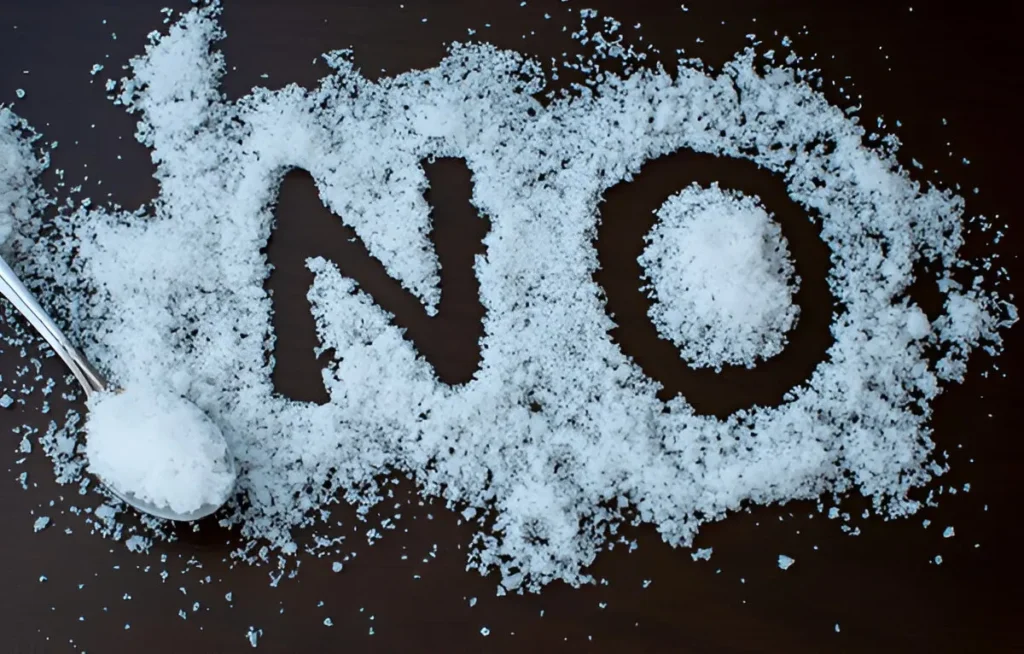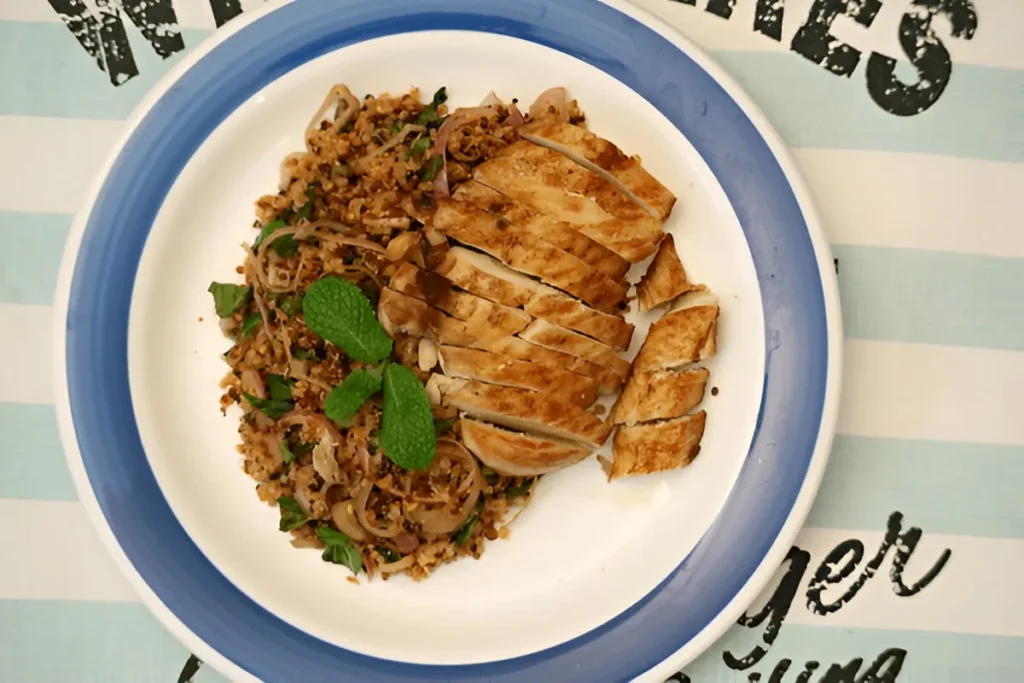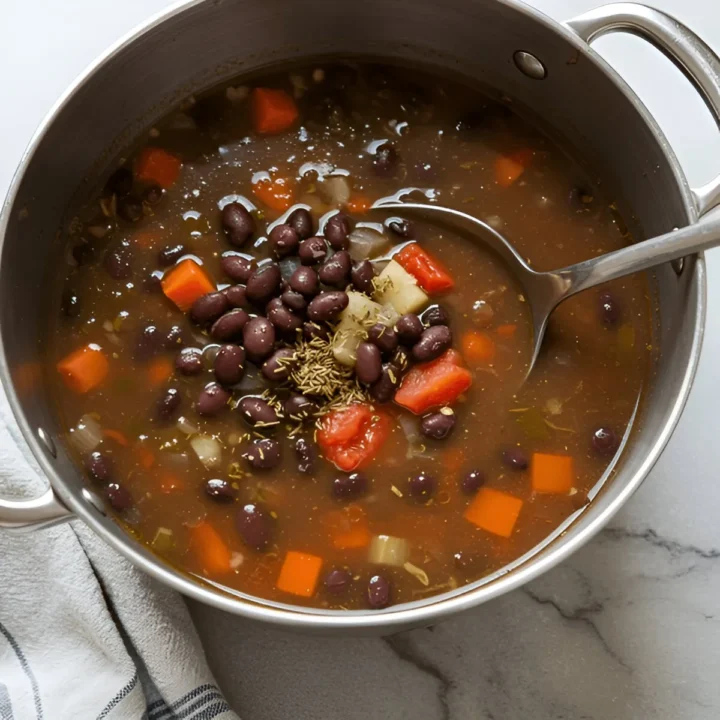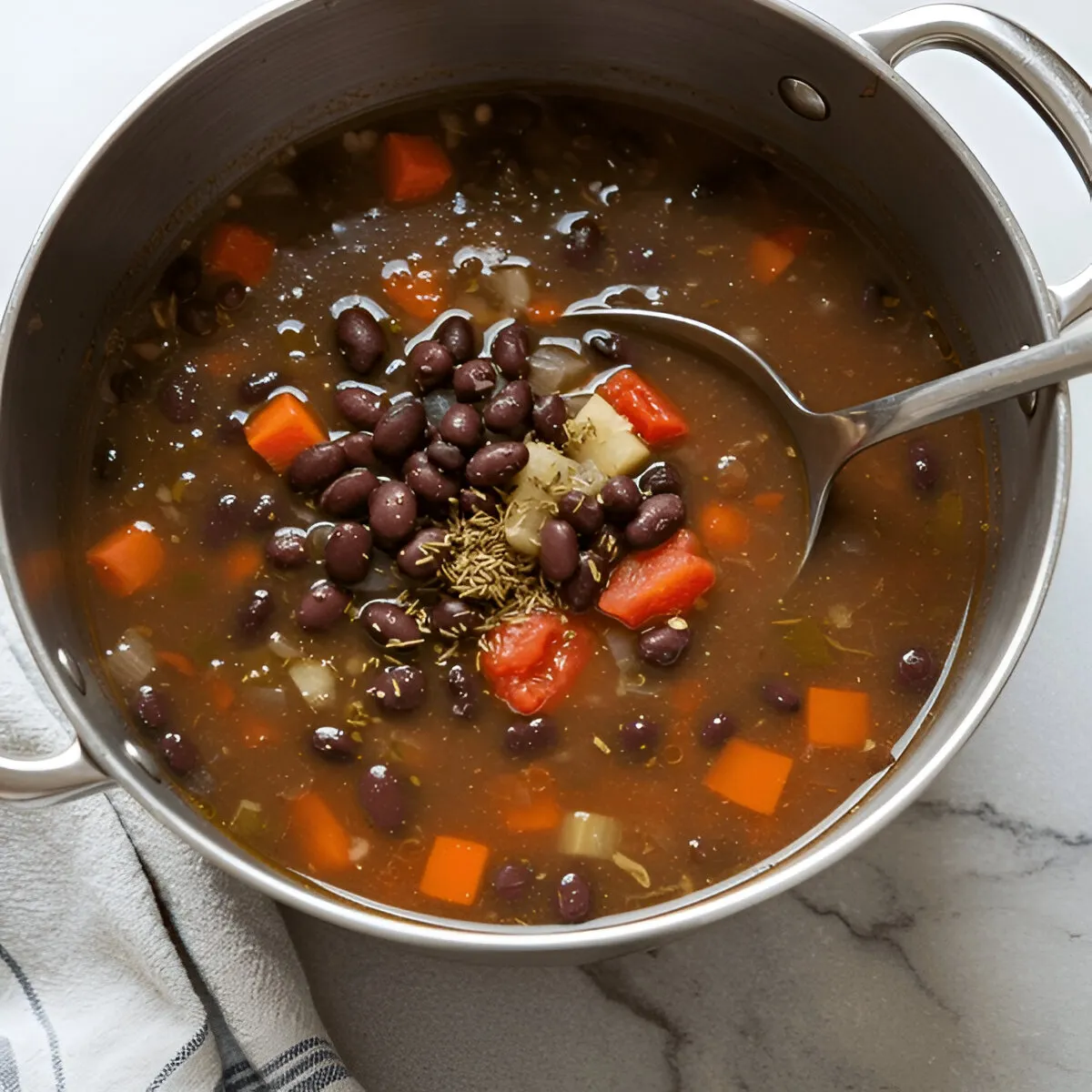A no salt diet for weight loss focuses on cutting out added sodium to help the body shed extra water weight and support overall health.
This approach suits people looking to manage bloating, improve heart health, or lose weight without relying on processed foods. Below, I share a detailed guide on why a no salt diet works, who it benefits, how to follow it, and a simple recipe to get you started.
My own experience with low-sodium eating showed me how much better I felt—less puffy, more energized—so I’m eager to dive into the science and practical tips to help you succeed.
This post covers the science behind sodium and weight, the benefits and risks of going salt-free, a step-by-step recipe, and answers to common questions. Let’s get into it with clear, research-backed insights and a recipe you can make tonight.
Understanding Sodium and Weight Loss
Sodium impacts weight because it makes the body hold onto water. Each gram of sodium can cause the body to retain about 3 grams of water, leading to bloating and temporary weight gain.
Studies from the American Journal of Clinical Nutrition (2023) show that reducing sodium intake lowers water retention within 48 hours, helping people see a quick drop on the scale.
This isn’t fat loss but can motivate those starting a weight loss plan. Over time, cutting salt also supports fat loss by encouraging whole, unprocessed foods, which are naturally lower in calories.
The average American eats about 3,400 mg of sodium daily, per the CDC, far above the 2,300 mg recommended limit. Processed foods like chips, canned soups, and fast food account for 70% of this intake.
A no salt diet eliminates these, forcing reliance on fresh ingredients, which often have fewer calories and more nutrients. My own switch to no added salt made cooking more creative—I started using herbs and spices to bring out natural tastes, which kept meals satisfying.
How Sodium Affects the Body
Sodium regulates fluid balance, nerve function, and muscle movement. Too much sodium, however, strains the kidneys, raises blood pressure, and causes swelling, especially in the legs and hands.
Research from the Journal of Hypertension (2024) links high sodium to increased appetite, as it can disrupt hunger hormones like leptin. By cutting salt, you stabilize these signals, making it easier to eat less without feeling deprived.
A no salt diet also reduces inflammation. A 2023 study in Nature Medicine found that excess sodium triggers immune responses that promote inflammation, which can slow metabolism and make weight loss harder.
Going salt-free eases this burden, letting the body focus on burning fat. I noticed less joint stiffness after a week of no added salt, which made exercise feel easier.
Why Choose a No Salt Diet for Weight Loss?
A no salt diet helps with weight loss by reducing water retention and encouraging healthier food choices. It’s not about starving but about eating whole foods like vegetables, lean proteins, and fruits, which are naturally low in sodium.
These foods fill you up with fiber and nutrients, keeping hunger at bay. A 2022 study in Obesity Research showed that low-sodium diets led to 5-7% body weight loss over 12 weeks when paired with calorie control.
This diet also improves heart health, which supports exercise—a key part of weight loss. Lower sodium reduces strain on blood vessels, per the American Heart Association, making workouts feel less taxing. I found morning walks more enjoyable after cutting salt, as my energy levels stayed steady without the usual midday crash.
Who Should Follow a No Salt Diet?
A no salt diet suits people with specific health goals or conditions. It’s great for those with high blood pressure, kidney issues, or bloating, as it eases fluid retention and organ stress.
People aiming to lose weight quickly—say, for an event—often see fast results from less water weight. Athletes or active folks can benefit too, as low sodium prevents sluggishness from excess fluid.
However, it’s not for everyone. Pregnant women, people with low blood pressure, or those on intense workout plans may need some sodium to maintain electrolyte balance. A 2023 study in Sports Medicine warns that too little sodium can cause muscle cramps or fatigue in endurance athletes.
Always check with a doctor before going fully salt-free, especially if you have health conditions. I learned this the hard way when I felt dizzy after a long run—adding a pinch of natural sodium from celery juice fixed it.
Comparing No Salt vs. Low Salt Diets
| Diet Type | Sodium Intake | Weight Loss Impact | Best For |
| No Salt Diet | 0 mg added | Fast water weight loss, promotes whole foods | Bloating, hypertension, quick results |
| Low Salt Diet | 1,500-2,300 mg | Gradual water and fat loss, sustainable | General health, long-term weight loss |
A no salt diet is stricter, cutting all added sodium, while a low salt diet allows small amounts, like from natural sources (e.g., eggs, spinach). The no salt approach works faster for shedding water weight but can be tough to stick with long-term.
Low salt diets are easier for most people, balancing health benefits with flexibility. I prefer a no salt diet for a 1-2 week reset, then switch to low salt for maintenance.
Safety and Risks of No Salt Diets

No salt diets are safe for most healthy adults for short periods, like 1-4 weeks. They reduce blood pressure and bloating without major risks, per a 2024 study in The Lancet.
However, going too long without sodium can lead to hyponatremia, a condition where blood sodium levels drop dangerously low, causing nausea, headaches, or even seizures in rare cases. The Mayo Clinic notes this is rare but more likely in elderly people or those on diuretics.
To stay safe, focus on natural sodium sources like vegetables and lean meats, which provide small amounts without overloading the body.
Drink plenty of water to support kidney function, and watch for signs like dizziness or extreme tiredness. I always keep a journal to track how I feel when trying new diets—it helps spot issues early.
Benefits of a No Salt Diet Beyond Weight Loss
A no salt diet does more than help you lose weight. It lowers blood pressure, with studies showing a 5-10 mmHg drop in systolic pressure within a week, per the Journal of Cardiology (2023).
This reduces heart disease risk by up to 20%. It also improves kidney function by easing the strain of filtering excess sodium, which is critical for those with early kidney disease.
Another perk is better skin health. Excess sodium dehydrates skin, leading to puffiness and dullness. A 2022 Dermatology Reports study found that low-sodium diets improve skin hydration and reduce acne flare-ups. I noticed my face looked less swollen after a few days without salt, which was a nice bonus.
Impact on Gut Health
Cutting salt improves gut health by reducing harmful bacteria. A 2024 study in Gut Microbes found that high sodium disrupts the gut microbiome, promoting inflammation and digestive issues.
A no salt diet encourages fiber-rich foods like vegetables and whole grains, which feed good gut bacteria. This leads to better digestion and less bloating, making weight loss feel easier. I found my stomach felt calmer after swapping salty snacks for fresh veggies.
Mental Clarity and Energy
A no salt diet can sharpen focus and boost energy. Excess sodium causes blood vessel constriction, reducing oxygen flow to the brain, per a 2023 Neurology study.
By cutting salt, you improve blood flow, which enhances concentration and reduces fatigue. I felt more alert during work hours after going salt-free, which helped me stay productive without relying on coffee.
How to Start a No Salt Diet
Starting a no salt diet means planning meals around whole, unprocessed foods. Shop for fresh vegetables, fruits, lean meats, and whole grains. Avoid canned goods, deli meats, and packaged snacks, as they often hide high sodium.
Read labels carefully—terms like “sodium-free” mean less than 5 mg per serving, per FDA guidelines. Stock up on herbs like basil, oregano, and thyme to add taste without salt.
Meal prep is key. Cook in batches to save time, and use citrus or vinegar for tangy flavors. I like to keep a stash of pre-chopped veggies in the fridge—it makes throwing together a no salt meal quick and easy. Drink 8-10 cups of water daily to flush out excess sodium and keep your body hydrated.
Tips for Sticking to the Diet
- Plan meals weekly to avoid reaching for salty convenience foods.
- Use spices like cumin or paprika to make dishes exciting without salt.
- Eat out less, as restaurant foods often have hidden sodium.
- Keep a food diary to track progress and stay motivated.
These steps helped me stay on track during my first no salt week. The diary especially kept me honest—I could see how much better I felt each day.
Transitioning Off the Diet
After 1-4 weeks, slowly add small amounts of sodium back, like from natural sources (e.g., milk, beets). Aim for 1,500-2,000 mg daily to maintain benefits without overloading.
A sudden return to high-sodium foods can cause bloating or blood pressure spikes, per a 2024 study in Clinical Nutrition. I eased back by using a tiny pinch of sea salt in cooking, which kept meals tasty without undoing my progress.
No Salt Recipe: Lemon Herb Chicken with Veggie Quinoa

This lemon herb chicken with veggie quinoa is a simple, no salt recipe perfect for weight loss. It’s packed with protein, fiber, and fresh flavors from lemon and herbs. The chicken stays juicy, and the quinoa adds a hearty, filling base. I love this dish because it’s easy to make and keeps me full for hours.
Ingredients (Serves 4)
- 4 boneless, skinless chicken breasts (4 oz each)
- 1 cup quinoa, rinsed
- 2 cups low-sodium vegetable broth (check for sodium-free)
- 1 zucchini, diced
- 1 red bell pepper, diced
- 1 cup cherry tomatoes, halved
- 2 tbsp fresh lemon juice
- 1 tbsp olive oil
- 1 tsp dried oregano
- 1 tsp dried basil
- 1 tsp garlic powder
- 1 tsp black pepper
- Fresh parsley, chopped (for garnish)
Steps to Prepare
- Rinse quinoa under cold water to remove bitterness. In a medium pot, combine quinoa and vegetable broth. Bring to a boil, then reduce heat to low, cover, and simmer for 15 minutes or until liquid is absorbed. Set aside to cool slightly.
- While quinoa cooks, pat chicken breasts dry with a paper towel. In a small bowl, mix lemon juice, olive oil, oregano, basil, garlic powder, and black pepper to make a marinade.
- Coat chicken breasts with the marinade. Let sit for 10 minutes to soak up the flavors.
- Heat a non-stick skillet over medium heat. Add chicken breasts and cook for 6-7 minutes per side, or until internal temperature reaches 165°F. Remove from skillet and let rest for 5 minutes.
- In the same skillet, add zucchini, bell pepper, and cherry tomatoes. Sauté for 5 minutes until tender but still crisp. No oil needed—the veggies release their own moisture.
- Fluff quinoa with a fork and stir in the sautéed vegetables. Divide quinoa mixture onto four plates. Slice chicken breasts and place on top of quinoa.
- Garnish with fresh parsley and a drizzle of lemon juice for extra brightness. Serve warm.
Nutritional Breakdown (Per Serving)
| Nutrient | Amount |
| Calories | 320 kcal |
| Protein | 30 g |
| Carbohydrates | 28 g |
| Fat | 8 g |
| Sodium | <5 mg |
| Fiber | 5 g |
This meal is low in calories and sodium, high in protein, and filling due to the fiber-rich quinoa and veggies. It’s perfect for weight loss and keeps you satisfied without feeling heavy.
When to Use This Recipe for Best Results
This lemon herb chicken with veggie quinoa works best when eaten as a main meal, especially lunch or dinner, to support weight loss goals.
Timing matters because the high protein (30 g per serving) and fiber (5 g) keep you full for hours, reducing the urge to snack on high-sodium foods later.
A 2024 study in Nutrition and Metabolism found that protein-rich meals consumed midday or early evening stabilize blood sugar and curb appetite, helping you stick to a calorie-controlled diet. I like having this dish around 6 PM—it gives me energy for evening activities without weighing me down.
For the best weight loss results, prepare this recipe during the first week of your no salt diet when water retention is highest. The low sodium helps flush out excess fluid, and the nutrient-dense ingredients fuel your body for exercise.
It’s also great post-workout, as the protein aids muscle recovery, per a 2023 Journal of Sports Science study.
Avoid eating it too late at night—eating before 8 PM allows your body to digest properly, supporting metabolism. I found that pairing this meal with a morning walk amplified my energy and helped me see quicker results on the scale.
Common Challenges and Solutions
Sticking to a no salt diet can be tough, especially if you’re used to processed foods. One challenge is finding flavorful alternatives.
Herbs, spices, and citrus are your best friends—experiment with combinations like rosemary and lemon or cumin and lime. I struggled with bland meals at first, but mixing fresh herbs into every dish made a huge difference.
Another issue is eating out. Most restaurant dishes are loaded with sodium, even salads. Ask for no salt added and sauces on the side when dining out. I’ve found that simple grilled dishes, like fish or chicken, are safest.
Social pressure can also be tricky—friends might not understand why you’re avoiding salt. Explain your goals briefly or bring your own no salt snacks to gatherings.
Long-Term Sustainability
A no salt diet isn’t meant to last forever. After a few weeks, most people switch to a low salt approach for balance. To make it sustainable, focus on variety—try new recipes weekly to avoid boredom.
I keep a rotation of five no salt meals I love, which stops me from slipping back to salty snacks. Also, involve family or roommates in cooking—it’s easier when everyone’s on board.
FAQs About No Salt Diets
Can a No Salt Diet Help Me Lose Weight Fast?
Yes. A no salt diet cuts water weight quickly, often 2-5 pounds in the first week, per a 2023 study in Nutrition Journal. This happens because less sodium means less fluid retention. Long-term weight loss depends on pairing it with a calorie deficit and exercise.
Is a No Salt Diet Safe for Everyone?
No. It’s safe for most healthy adults for short periods, but those with low blood pressure, pregnancy, or intense exercise needs should avoid it. Low sodium can cause dizziness or cramps in these groups, per Mayo Clinic guidelines. Always consult a doctor first.
How Do I Make Food Taste Good Without Salt?
Use herbs, spices, citrus, and vinegar. Fresh basil, oregano, or lemon zest add bold flavors. A 2024 study in Food Science found that spices like cumin or paprika enhance taste perception, making salt unnecessary. Experiment with new combinations to keep meals exciting.
Can I Eat Out on a No Salt Diet?
Yes. Choose grilled or steamed dishes and ask for no added salt. Avoid sauces and dressings, which often hide sodium. I always call ahead to check if restaurants can accommodate no salt requests—it saves stress.
How Long Should I Follow a No Salt Diet?
Most experts recommend 1-4 weeks for weight loss or health resets, per The Lancet (2024). Longer periods risk sodium deficiency. I did two weeks and felt great, then added small amounts of natural sodium for balance.
Does a No Salt Diet Affect Exercise Performance?
It can. Low sodium may cause muscle cramps or fatigue in intense workouts, per Sports Medicine (2023). Drink water and eat sodium-rich veggies like celery to stay balanced. I noticed better stamina after adjusting my diet this way.
What Foods Should I Avoid on a No Salt Diet?
Stay away from processed foods like chips, canned soups, and deli meats. These have high sodium, often 500-1,000 mg per serving, per FDA data. Stick to fresh produce, lean proteins, and whole grains for best results.
Final Thoughts
A no salt diet is a powerful tool for weight loss, cutting water weight, and improving overall health. It’s not just about dropping pounds—it’s about feeling lighter, more energized, and in control of your eating.
The lemon herb chicken with veggie quinoa recipe is a great starting point, easy to make and full of fresh flavors. I’ve seen firsthand how cutting salt can change how you feel, and the science backs it up with benefits for your heart, kidneys, and even skin.
Stick to whole foods, experiment with herbs, and plan ahead to make this diet work. It’s not always easy, but the results are worth it. Try it for a week and see how your body responds—you might be surprised at the difference.

No Salt Diet Recipe
This no salt lemon herb chicken with veggie quinoa is a light and filling dish packed with fresh vegetables, lean protein, and herbs. It’s ideal for weight loss and supports hydration and energy without added sodium.
Ingredients
- 4 boneless, skinless chicken breasts (4 oz each)
- 1 cup quinoa, rinsed
- 2 cups low-sodium vegetable broth
- 1 zucchini, diced
- 1 red bell pepper, diced
- 1 cup cherry tomatoes, halved
- 2 tbsp fresh lemon juice
- 1 tbsp olive oil
- 1 tsp dried oregano
- 1 tsp dried basil
- 1 tsp garlic powder
- 1 tsp black pepper
- Fresh parsley, chopped
Instructions
- Rinse quinoa and cook in vegetable broth until liquid is absorbed
- Pat chicken dry and coat with lemon juice, olive oil, and spices
- Let chicken marinate for 10 minutes
- Cook chicken in skillet until done, then rest for 5 minutes
- Sauté vegetables until tender
- Combine cooked quinoa with vegetables
- Slice chicken and place on top of quinoa mixture
- Garnish with parsley and lemon juice
Notes
This recipe is great for reducing water weight and supports low-sodium eating without sacrificing flavor. Best enjoyed as a main meal to keep you full and energized.
Nutrition Information:
Yield: 4 Serving Size: 1 chicken breast with 1/4 quinoa-veggie mixAmount Per Serving: Calories: 320Total Fat: 8gSaturated Fat: 1.2gTrans Fat: 0gUnsaturated Fat: 6.8gCholesterol: 75mgSodium: 5mgCarbohydrates: 28gNet Carbohydrates: 23gFiber: 5gSugar: 3gSugar Alcohols: 0gProtein: 30g

